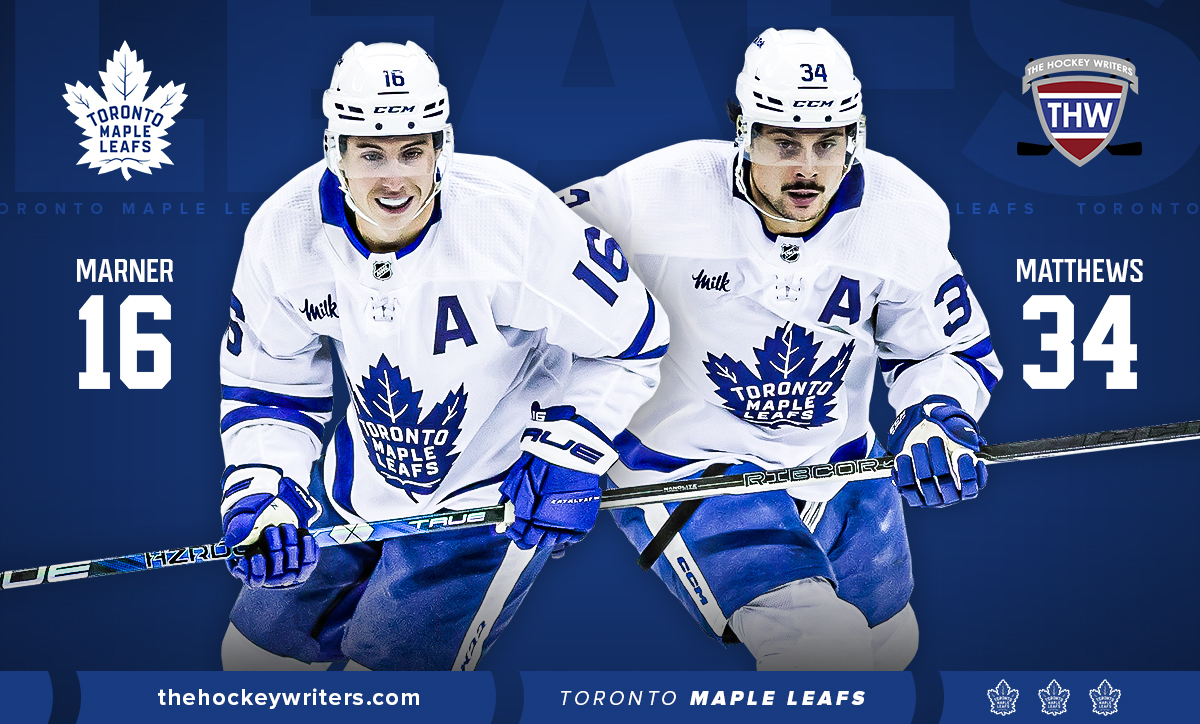The Toronto Maple Leafs, as they always seem to be, find themselves at a crossroads as the trade deadline approaches. Brad Treliving’s ambitious swings for the fences during the offseason haven’t yielded the desired results. Players like John Klingberg, Ryan Reeves, and Tyler Bertuzzi have not lived up to expectations. However, amidst these disappointments, Treliving’s success in acquiring lower-cost gems like Simon Benoit, Noah Gregor, and Martin Jones highlights an alternative path the team could take.
Time for a Change in Trade Deadline Philosophy
As the Maple Leafs try to make the most of their trade deadline choices, a shift in philosophy is necessary. Instead of pursuing high-profile, high-cost rentals, the team should consider a more strategic and cost-effective approach. The team either has the elite players, offense, and leadership it needs; or, it doesn’t. Right now, and for this season, it’s time to trust them rather than try to modify them.
Related: Maple Leafs Blue Line Gets More Physical With Simon Benoit
Instead of seeking a single player – a trade deadline rental – who might become the tipping point for putting the team over the top, the focus should be on finding players who both address immediate needs for the postseason but also contribute to the team’s success in the long run. Who says it’s not possible to have it both ways? That is, to strengthen the team’s ability to compete in the postseason while building for next season as well. Certainly, that can’t be done with a trade-deadline rental.
This dual-purpose strategy involves identifying players who can provide valuable contributions both in the current playoffs and in the upcoming 2024-25 season. At the same time, all these decisions must adhere to the team’s salary structure. Rather than swinging for the fences – going for the home run, the Maple Leafs should target bunt singles – modest, low-cost players who can make an impact and fill a specific need, without breaking the bank.
There Are a Few Examples Already on the Maple Leafs Roster
Looking back at past instances, the Maple Leafs can draw lessons from successful acquisitions like Conor Timmins and Luke Schenn. These players were acquired at a reasonable cost and provided stability and depth to the team. Schenn’s impact was helpful. He came for a third-round draft choice. Timmins is still in the process of growing into a player the team might use. However, he came for virtually nothing. Such examples underscore the potential benefits of seeking specific players with defined roles rather than pursuing high-profile rentals.
Related: Maple Leafs Add Depth, Untapped Potential in Conor Timmins
The fact is that I have few examples of the Maple Leafs being able to utilize the principles I am describing because thus far they simply haven’t done so. That said, it could be that there’s a player similar to Nick Paul under a stone on some team’s roster who could be helpful for the long term, just like Paul has added so much to the Tampa Bay Lightning’s depth play during the playoffs.

(Steve Russell/Toronto Star via Getty Images)
To implement this new philosophy effectively, the Maple Leafs can borrow from the “Moneyball” concept popularized by the Oakland Athletics in baseball. This involves using advanced analytics to identify undervalued players whose contributions might not be fully reflected in traditional statistics. The team probably already has a group of statisticians who could leverage possession metrics, defensive impact, and other advanced statistics to uncover players who could bring unique value to the lineup.
Big Name Trade Deadline Acquisitions Haven’t Cut It, Role Players Are Better Choices
Rather than relying on big names – a Nick Foligno or a Ryan O’Reilly – the Maple Leafs could focus on players with specific skill sets that align with the team’s needs. This could include penalty-killing specialists, faceoff experts, shutdown defensive players, players who bring physicality, or versatile players capable of contributing in various roles. The emphasis could be on finding players who provide specific, cost-effective contributions.
Related: 3 Possible Offseason Destinations For Nick Foligno
Versatility becomes a crucial factor because players who can handle different roles – from playing on various lines to excelling in special teams situations – can bring added value. The team could target players like Calle Jarnkrok, who, despite not being a headline-grabbing acquisition, contributes responsibly in multiple areas. He also is on contract at a modest cost.

Character and work ethic should also be prioritized. Seeking players who consistently put in effort, show resilience, and positively impact team culture would significantly contribute to success, especially in the pressure-cooker environment of the playoffs. Identifying undervalued players with these qualities requires thorough scouting and a willingness to take calculated, inexpensive risks.
The Temptation for the Maple Leafs to Go All-In Is Huge But Wrong-Minded
While the temptation to spend big at the trade deadline is strong, the Maple Leafs need to resist the urge to go all-in with high-profile rentals. Instead, the team should trust its core players, assess their leadership capabilities, and focus on building a cohesive system that maximizes each player’s strengths. This approach requires patience and a commitment to the long-term vision.
However, it also tries to have it both ways. That is, it uses the strengths of this team and adds modest investments on the edges. It’s the way the team was built. If it doesn’t work, that’s next year’s project.
Related: Today in Hockey History: Jan. 16
By applying Moneyball principles to the NHL trade deadline, the Maple Leafs can seek cost-effective players who bring specific, undervalued contributions to the lineup. The goal should be to build a well-rounded and effective roster that contends in the playoffs without jeopardizing the team’s financial stability.
It’s Time for the Maple Leafs to Change Its Trade Deadline Ways
The current approach of going all-in has proven expensive and fruitless for the Maple Leafs. It’s time for a change. A shift toward a more calculated, strategic philosophy at the trade deadline could yield significant rewards. The team has elite scoring; now, it’s about finding the right pieces to complement that elite talent.

(The Hockey Writers)
The bottom line is that what the Maple Leafs have been doing has not worked. In addition, it’s been a costly failure. Can anyone imagine the team the Maple Leafs might have built had it retained all its draft choices and used them wisely to construct a team from the ground up?
The team needs a new philosophy for this season’s trade deadline. It needs a plan that prioritizes specific needs, cost-effectiveness, and long-term success. Embracing a Moneyball-inspired approach can lead to valuable acquisitions that enhance the team’s chances in the postseason while building a foundation for sustained success in the future.
